Side effects of cannabidiol (CBD)
- CBD on the rise: What is its safety profile?
- Does CBD have any side effects?
- What are the side effects of CBD?
- Current research on CBD side effects
- What causes CBD side effects?
- What can I do if I experience side effects from CBD?
- Frequently asked questions
- What side effects does CBD have on the eyes?
- Do other cannabinoids have side effects?
- What side effects does CBD oil have?
- What are the negative side effects of CBD gummies and what are the side effects of CBD sleep gummies?
- What are the side effects of CBD vape?
- How long does it take for the side effects of CBD to go away?
- Who should avoid taking CBD?
CBD on the rise: What is its safety profile?
Cannabidiol (CBD) is very popular nowadays. Everyone talks about the benefits of this non–therapeutic supplement obtained from cannabis plants, used for fighting anxiety, pain, sleep disorders, and many more. But is CBD safe? Has it been tested on humans? What are the side–effects?
In 2018, the World Health Organization (WHO) released a report on CBD: “CBD is generally well tolerated with a good safety profile.”
This report was one of the main factors leading governments around the world to revise laws on CBD use – it is now legal and available in most developed countries worldwide.
Despite showing a very promising safety profile, there is still some potential room for side–effects. Only in very few cases, CBD supplements should be avoided altogether.
In this article, we discuss in detail the potential long–term and short–term side–effects of CBD. Also, we are going to look at the probable causes of side–effects, how you can minimize the risk, and what you can do if you happen to experience them.
It is a broad topic, so let’s do it.
Does CBD have any side effects?
The short answer is yes. Although the evidence shows that CBD is safe – nothing is entirely free of side–effects. Any food supplements or medications that cause physiological changes in the body have potential side effects.
CBD has many effects on the human body – that is, some of them will likely show adverse reactions. We call them side effects.
However, CBD has rather lower side effects. Problems regarding side-effects in CBD most often occur in high doses of CBD, when mixing CBD with other medications, or taking CBD in combination with commonly occurring health conditions.
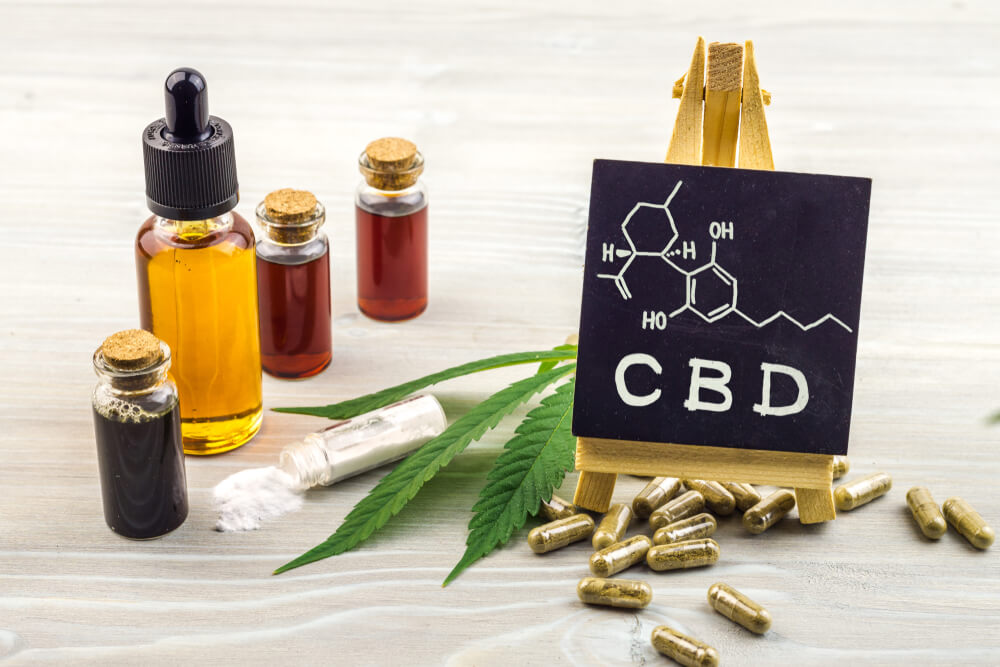
What are the side effects of CBD?
When taking CBD, there may occur five common side effects – low blood pressure, dry mouth, diarrhea, loss of appetite, and fatigue. All these side effects are considered to be short-term. This means that they last only as long as CBD remains active within the system. Such symptoms disappear as soon as CBD is excreted.
There are several CBD based pharmaceutical products on the market, such as Epidoliex and Sativex. A lot of research has been done on each of them to assess their potential side effects. This research has given us a much better knowledge of the potential adverse effects of CBD and other related cannabinoids.
Side effects of CBD can be divided into two categories, short-term and long-term. We will look into all of them in more detail.
Short-term side effects of CBD
As soon as CBD begins to take effect, short-term side effects may immediately occur. They can last from a few minutes to several hours. Once CBD wears off, the side effects usually disappear too.
Side effects of CBD may include:
- Low blood pressure (defined as blood pressure below 110/80 mm Hg)
- Dry mouth (Xerostomia)
- Fatigue
- Diarrhea
- Lack of appetite
- Rash
- Nausea and vomiting
Long-term side effects of CBD
Long-term side effects do not appear right away. They develop over time, along with constant use. Very few long-term side effects are reported in regard to CBD. Many of them can be attributed to other aspects of CBD use – such as smoking, vaping, or combining CBD with other pharmaceutical drugs.
Long-term side effects of CBD may include:
- Weight changes (loss or gain)
- Common infections (low immunity)
- Unusual test results of liver function (high AST or ALT)
- Feeling weak or tired
Current research on the side effects of CBD
In scientific literature, the results of a large amount of research, which examines the safety profile of CBD, are currently available. This research is crucial for further testing in order to explore other medicinal use of CBD on human patients. Yet, scientists cannot test CBD in relation to a condition such as epilepsy until it is proven to be safe.
Let’s take a look at some of the most important safety research related to CBD:
Bergamaschi et al., 2011 – This review focuses on 132 research papers that evaluated CBD safety and tolerance. These studies included in vitro research, animal testing, and clinical trials on human patients. The study concludes that CBD is safe and well tolerated by humans, even in high doses for a long time. The researchers note that there are potential adverse side effects when CBD is taken in combination with other medications or associated with some health conditions.
Iffland&Grotenhermen, 2017 – The aim of this review was to follow up with the research published by Bergamaschi et al. The study results confirmed the initial conclusion of the original review and underlined CBD as a safe and effective therapeutic addition for the vast majority of patients. It also states that the most common side effects are fatigue, diarrhea, and appetite/weight changes. The researchers also note that CBD is way better tolerated than other drugs used for similar objectives.
Johnson et al., 2013 – This study examines the long–term health effects of CBD and THC. Preparations with these two cannabinoids were administered to 43 cancer patients every day for two weeks. The researchers state that there were minimal side effects and conclude that the preparations are generally “well tolerated.”
Devinksy et al., 2018 – This randomized clinical trial examined the effects of CBD in the treatment of a rare form of epilepsy, known as Dravet syndrome, for 13 weeks. Thirty–four patients diagnosed with Dravet syndrome (aged 4 to 10 years) were randomized to three treatment groups – 5 mg/kg, 10 mg/kg, 20 mg/kg of CBD, and an inactive placebo–controlled group. The study concluded that the majority of all patients tolerated CBD well (completion rate of 94%). The safety findings were in line with another study. Some patients were found to have elevated ALT or AST (an indication of changes in liver functioning), but these increases disappeared once CBD was discontinued. So far, this is one of the best studies conducted on CBD safety in children, especially since the doses used in the trials were significantly higher than standard doses of CBD.
Taylor L., Gidal B., Blakey G., et al.,2019 – Research has focused on CBD administration in healthy individuals. The researchers pointed out that CBD is not without risks. Side effects such as drowsiness, fatigue and elevated liver enzymes (ALT and AST) have been observed. CBD has been shown to increase liver function tests – the study highlights the need to monitor the liver at higher doses of CBD.
Shannon S., Lewis N., Lee H., Hughes S., 2019 – Study observed CBD use in patients suffering from anxiety and sleep disorders. Side effects were minimal, most commonly fatigue and mild sedation.
Ewing LE, Skinner CM, Quick CM, et al.,2020 – A study investigated the effects of CBD when taken long-term in mice. Research suggested that high doses of CBD may cause elevated liver enzyme levels, which may be an indicator of liver toxicity.
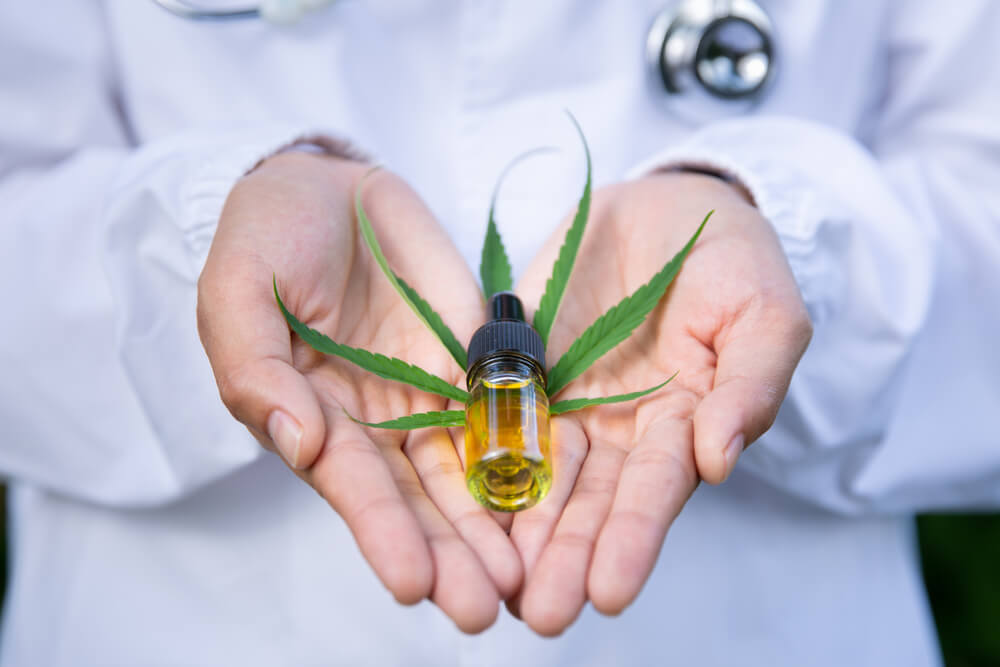
What causes the side effects of CBD?
The list of effects of CBD on humans is long. They work by binding or modulating various receptors in the body. These receptors control other chemicals, cellular and organ functions. Such interactions with the receptors create the known benefits of the effects of CBD, but also some of its side effects.
There are other ways CBD can cause side effects – some of which relate to how much CBD has been administered, what other drugs have been taken along with it, common health conditions, and the presence of contaminants in the CBD extract itself.
We will take a closer look into each of these potential causes in more detail, as well as what you can do to minimize the chances of side effects.
1. Smoke or vapor inhalation
Different forms of CBD can cause other side effects. For example, CBD smoking, dabbing, or vaping can lead to short-term side effects caused by inhaling compounds through the lungs. Smoke inhalation causes lung damage along with an increase of carbon dioxide and carbon monoxide concentration in the bloodstream. This can lead to side effects such as cough, sore throat, fatigue, and nausea.
Recently, there have also been reports of a condition known as lipoid pneumonia, which can even be life-threatening. This condition is caused by inhalation of fatty substances into the lungs, such as vaporizing oils or fluids. It is a rare condition and can be caused by any liquids, including CBD vaporizing oils.
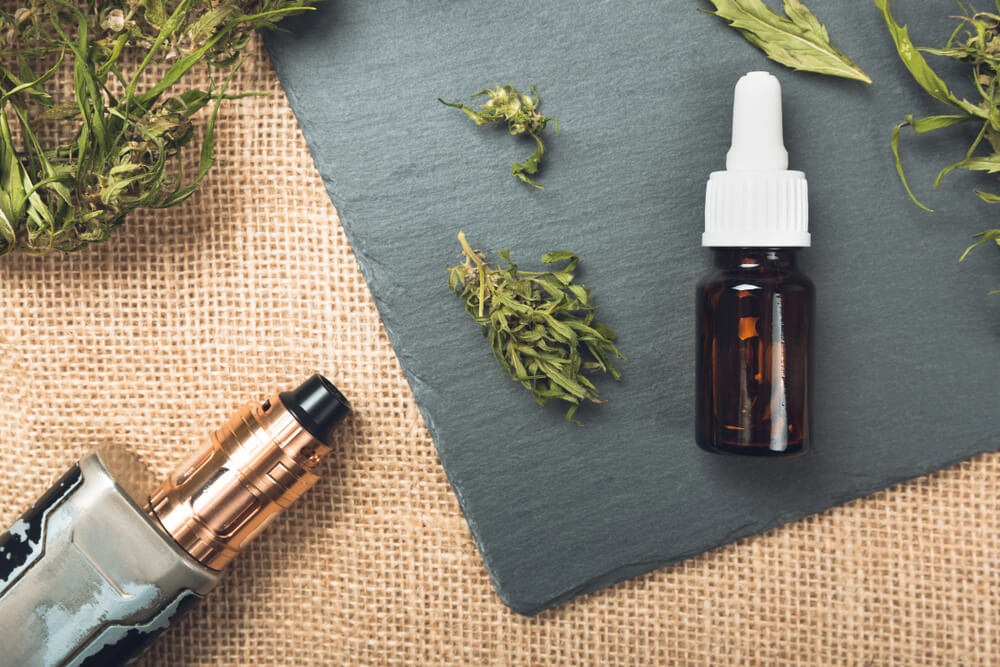
How to minimize risks
The easiest way to minimize the likelihood of side effects from inhaling smoke or vapors is to take CBD orally in the form of CBD oils, capsules, foods, or external administration.
There are many excellent CBD products that do not rely on smoking or vaping when passing CBD into the body. It saves the lungs and keeps harmful compounds, such as carbon monoxide, out of the bloodstream.
2. High doses of CBD
The more CBD you take, the stronger the effects will be. This applies to both the positive and negative effects of CBD. Several of the research papers mentioned above used high doses of CBD (up to 20 mg/kg) in their trials, which is significantly higher than the standard amount of CBD. Although it is still safe even at these levels, the greater the dose of CBD, the greater the chance of side effects.
How to minimize risks
If you have never used CBD before, it is essential that you understand how to find the best dose for you. The effective dose of CBD is different for everyone, so you need to use the trial and error method to find out what works best.
Most people do this by starting with a low dose and slowly increasing it over time. Once you have reached the desired effects at a particular amount, you have found your ideal dose.
Some people continue to increase the dose until they experience mild side effects, then return to the last level, which did not cause any, and stay with it. This is considered the maximum tolerated dose – or the highest amount before you experience adverse effects.
3. Interaction of CBD with other medicaments
Whenever you take medications or food supplements, you need to consider how the active ingredients might function within the body. Even if you take them separately, they eventually get mixed in the digestive tract and interact among themselves in the bloodstream.
CBD rarely interacts with other drugs. Yet, there are a few exceptions. It can weaken or boost the effects of the medication, which could lead to the occurrence of its side effects.
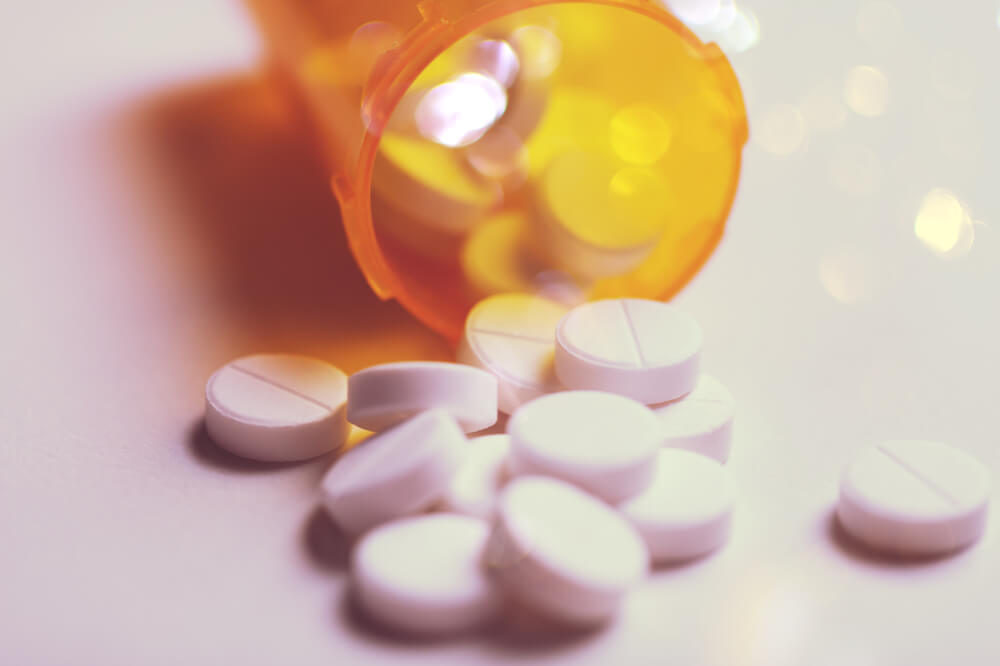
How to minimize risks
There are many ways how CBD can interact with other drugs. Even medications that seem unconnected to the effects of CBD can result in negative interaction due to how the liver or kidneys process them. If both CBD and the drug fight for the same pathway within the metabolism, it can cause their accumulation in the system, which eventually leads to the development of side effects.
For this reason, you need to talk to your doctor about using CBD if you are on any medications. They will give you more accurate advice on whether CBD is likely to interact with the medications you are taking and what you can do to reduce the chances of developing side effects.
4. Basic health problems
CBD is well known to provide benefits linked with specific health conditions. There is a lot of research on how this cannabinoid works on diseases such as epilepsy, multiple sclerosis, cancer, arthritis, and many more. However, some people may experience worsening of their health condition after taking CBD.
Troubles with the liver can also lead to side effects initiated by CBD. Most of the chemical substances, which pass through the body, must be metabolized by the liver before they are excreted. If the liver’s function is anyhow negatively affected, CBD and its metabolites can accumulate in the bloodstream, which can eventually lead to side effects.
Hypotension (low blood pressure) is one of the most underestimated health problems that people should consider before they start using CBD. Cannabidiol can cause a drop in blood pressure. It could be an advantage for many. However, if the patient’s blood pressure is too low, this effect can make it drop to dangerous levels. If this is the case, the hearth is not able to pump enough blood into the brain, which leads to malaise, confusion, or faints.
How to minimize risks
If you suffer from some minor health issues, the best way to avoid side effects is to talk to your doctor before taking CBD.
5. CBD products that are low–quality or contaminated
When discussing the side effects of CBD, it is necessary to consider its origin too. CBD oil can be contaminated during the growing and production processes. These contaminants can lead to both short-term and long-term side effects – some can even become quite serious.
That is why people should only buy CBD products from companies that publish independent laboratory analysis of each batch they put on sale.
Lab tests should identify all the possible contaminants in CBD products, such as:
- Heavy metals
- Pesticides
- Organic solvents (such as propane, butane, or hexane)
- Microbial contaminants (mycotoxins, bacteria, fungus)
- Psychoactive cannabinoids (THC, THCV)
The occurrence of contaminated CBD products is not unusual. It is, therefore, essential to check on the supplier before you place your order. Heads up if CBD oils are suspiciously cheaper than the competitors. This is usually too good to be true. Many of these oils are made from cheap cannabis grown in places like China or India, where soil contamination is common – leading to the accumulation of heavy metals or other harmful compounds in the final products.
Contaminants can lead to side effects such as:
- Headache
- Allergic reactions
- Skin rashes and conditions
- Blackouts
- Confusion
- Nausea and vomiting
- Loss of vision
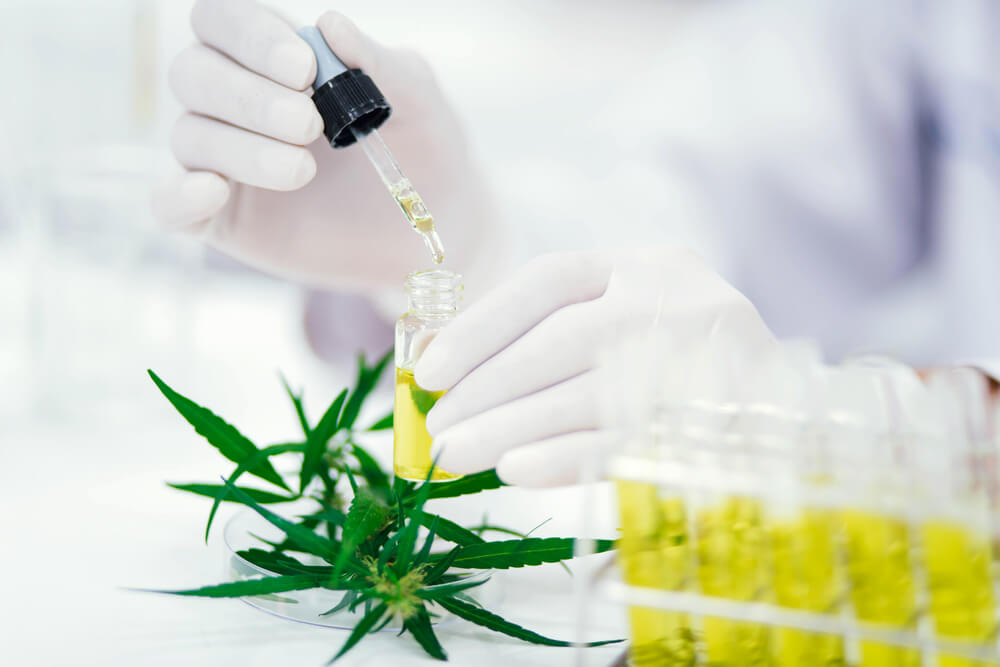
How to minimize risks
Always buy CBD from a reputable producer that offers clear evidence showing that every batch they produce is free of these contaminants. There are no safe limits on heavy metals, pesticides, or organic solvents, so it is important that tests do not show any traces of them.
6. Allergic reactions
Some side effects are the result of allergies. This can be caused by allergies to CBD itself, other cannabinoids, or additives such as oils, synthetic aromatic compounds, or vaping fluids.
Allergies are triggered by the immune system, which constantly monitors the body to identify and destroy everything that poses a threat. The immune system sometimes evaluates a safe compound as a threat, leading to what we call an allergic reaction.
When a threat is discovered (albeit by mistake), the immune system immediately sends a fleet of white blood cells and chemical agents to the affected area to drive away the intruder. This can lead to side effects such as skin rashes, swelling, throat swelling, including way more severe respiratory closure, tachycardia (increased heart rate), increased blood pressure, and loss of consciousness.
Most allergies to CBD products are provoked by chemical additives made of synthetic aromatic compounds or preservatives rather than CBD itself.
How to minimize risks
Allergies can be challenging to prevent and even harder to predict. For this reason, to see if you might experience any adverse reactions, it is a good idea to test a small amount of the CBD supplement before using the entire dose.
Regarding preparations for external use, apply a small amount to the skin and wait about 30–45 minutes to see if any unwanted reaction appears. If not, you should be safe to apply the product to a larger area.
The procedure is similar to foods. Start by eating a small amount. If possible, hold it in your mouth for a while. Wait 30–45 minutes to give the immune system time to react. If no side effects occur (most often swelling or itching), you can safely eat a greater dose.
What can I do if I encounter CBD side effects?
What happens if you start to feel CBD side effects? When should you begin to worry?
The vast majority of CBD side effects are mild in nature – that is, even if you feel uncomfortable, the side effects will go away on their own. Depending on what side effects you are experiencing, some measures will help them disappear much faster.
1. Dry mouth
The best way to eliminate this side effect is to drink something fruity, such as orange or pineapple juice, take a sip of water, or chew gum. If you are well hydrated before taking CBD, the likelihood of this side effect is well reduced.
2. Dizziness
This side effect is quite common and usually does not mean anything serious. However, dizziness can also warn of a more profound problem. Low blood pressure is typically the cause. Thus, it is better if you can sit or lie down to rest for a while. This will allow the blood to flow to the brain easily. It also helps if you drink some electrolytes before taking CBD. This supports the right blood pressure.
If you lose consciousness or experience excessive dizziness, stop taking CBD immediately, and see your doctor to discuss your symptoms.
3. Diarrhea
This side effect is hard to stop once it starts. You can get some medication, but by the time it kicks in, the side effect is likely to disappear anyway.

It helps to take CBD with a meal to minimize the possibility of diarrhea. If diarrhea persists, it is wise to talk to your doctor before taking CBD again.
4. Fatigue
Feeling tired after taking CBD is often the goal of using it, especially in people with sleeping difficulties. However, not everyone welcomes this result. The most simple prevention is to take CBD with caffeine, which tackles its sedative effects.
5. Lack of appetite
CBD can reduce appetite. Although it is usually not a serious problem, it can lead to nutritional deficiencies, weakness, irritability, and weight loss. Taking CBD with a meal can help.
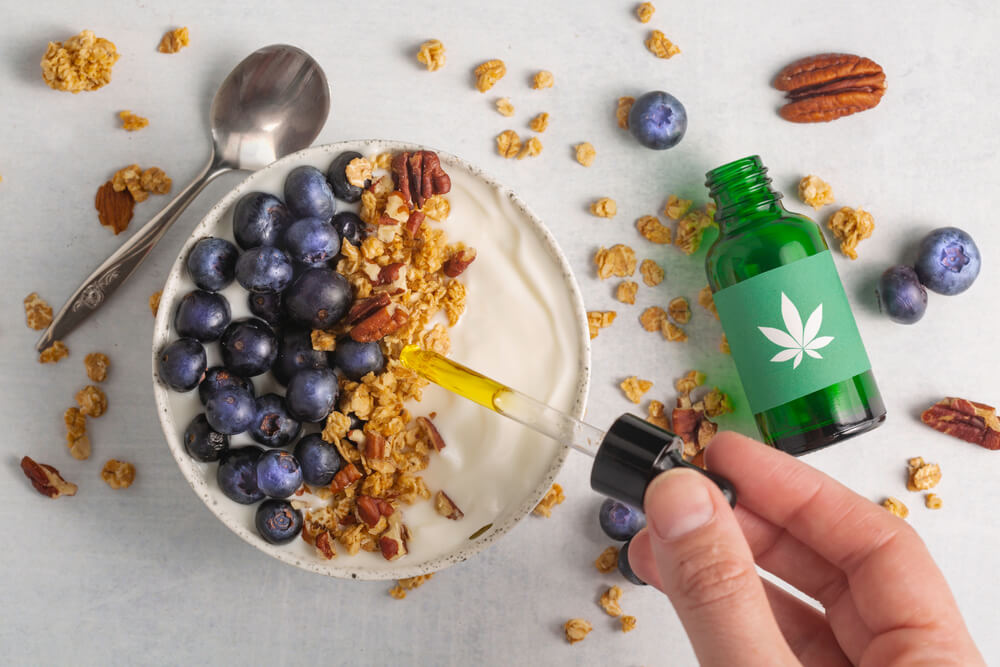
Frequently asked questions
Also check out the FAQs that most often interest you with this topic.
What side effects does CBD have on the eyes?
CBD can cause dry eyes in some individuals, similar to THC.
Do other cannabinoids have side effects?
CBD is not the only cannabinoid in the cannabis plant. In 2024, approximately 150–170 different cannabinoids have been identified in the cannabis plant. The number may vary depending on new studies and detection methods, as research into cannabis is ongoing.
Let’s take a look at the other most well–known cannabinoids, which include THC (tetrahydrocannabinol), CBN (cannabinol) and CBG (cannabigerol).
|
Cannabinoid |
Specifications |
Side effects |
| The main psychoactive ingredient in cannabis that causes “stupor” . Side effects are well documented, especially at higher doses |
|
|
| It is formed by the oxidation of THC. It can produce mild psychoactive effects in some users, but much weaker than THC. People use it to promote relaxation and sleep.
CBN is generally considered safe, but its effects are not as extensively researched as those of CBD or THC.
|
|
|
|
It has no psychoactive effects and offers anti–inflammatory and antibacterial properties.
There is still little research on side effects, but the available data show that it has a very good safety profile.
|
|
What are the side effects of CBD oil?
CBD oils are generally considered safe with minimal side effects.
In some people, they can cause fatigue, drowsiness, diarrhea, or changes in appetite. At higher doses, it can affect liver enzyme levels, especially if you are taking medicines that are metabolized in the liver.
If you are starting out with CBD oil, it is recommended to start with low doses and monitor how it affects you
What are the negative side effects of CBD gummies and what are the side effects of CBD sleep gummies?
CBD gummies are at risk of negative effects associated with exceeding the recommended dose. Dry mouth, nausea, low blood pressure or fatigue may occur. Some individuals may experience dizziness or headaches.
CBD sleep gummies may also contain other sleep–promoting substances such as melatonin. Side effects may include excessive sleepiness, daytime fatigue and, in rare cases, dizziness. If the user has a sensitive digestive system, mild bloating or diarrhea may occur.
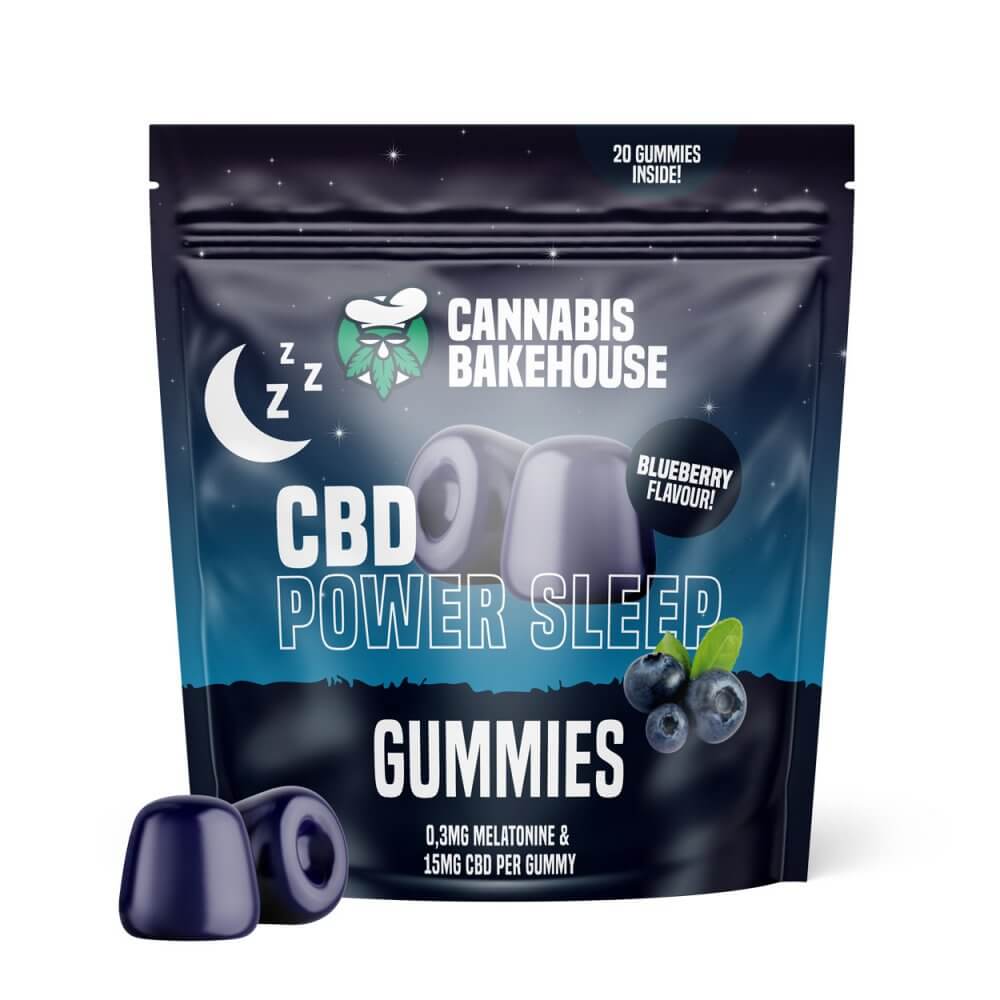
What are the side effects of CBD vape?
While vaping CBD has a rapid onset of action, specific side effects may occur. In addition to common side effects such as dry mouth, dizziness and drowsiness, inhaling the vapour can irritate the respiratory tract and cause coughing or throat irritation.
Poor quality products may contain harmful impurities such as heavy metals or solvent residues.
How long does it take for the side effects of CBD to wear off?
Side effects such as fatigue, dry mouth, light–headedness or drowsiness usually subside within a few hours (2–6 hours), depending on how you take it:
- CBD oil or tincture: the effects can last 4–6 hours.
- CBD edibles (gummies, capsules): CBD is absorbed more slowly by the digestive system, effects can last 6–8 hours.
- CBD vaporization: fastest onset of effects (5–10 minutes), wears off within 2–3 hours.
With long–term use or a higher dose, side effects disappear within 24–48 hours after stopping CBD.
Who should avoid taking CBD?
There are certain groups of people who should avoid using CBD altogether, or only use it after consulting a doctor.
- Pregnant and breastfeeding women
- People taking medicines metabolized in the liver (thyroid medicines, antidepressants, antiepileptics and anticoagulants)
- Persons with liver disease
- People with low blood pressure
- Individuals with blood clotting disorders
- People with a history of allergies to cannabis or CBD components
Author: Elena Moreau
Photo: Shutterstock
“All information provided on this website, as well as information provided through this website, is for educational purposes only. None of the information contained herein is intended to be a substitute for a medical diagnosis and should not be considered medical advice or recommended treatment. This website does not endorse, condones or advocate the licit or illicit use of narcotic drugs or psychotropic substances or the commission of any other illegal activity. For more information, please see our Disclaimer .”


